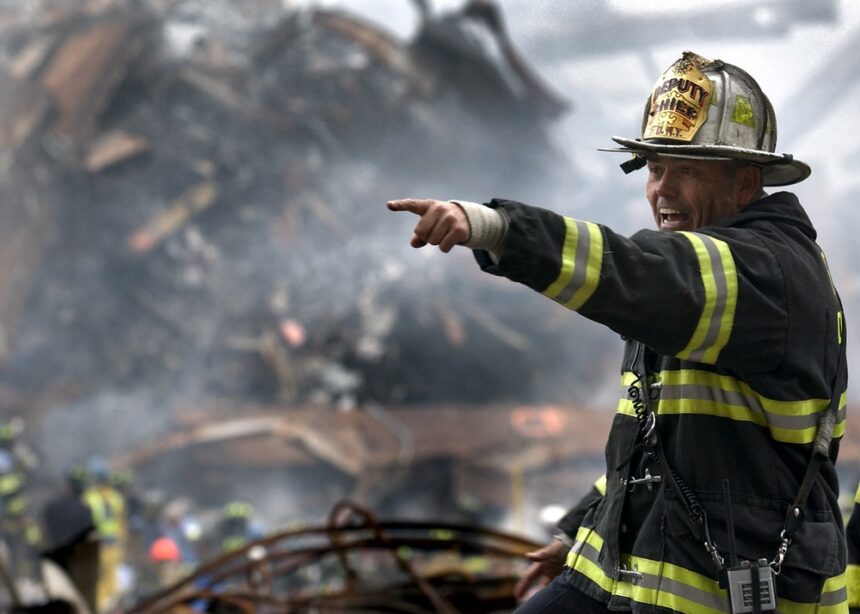At this moment, the United States is facing multiple natural disasters – fires continue to burn across California, Florence recently flooded the Carolinas, and Puerto Rico still largely lacks power though Hurricane Maria was more than a year ago. These individual disasters can each be directly linked to the accelerating pace of climate change, and they’re straining our capacity to respond. As healthcare professionals, however, we can help bridge this gap by training lay responders in basic emergency response.
Connecting With Our Communities
Hospitals, EMTs, and even firefighters have always played a role in preparing our communities for disaster. At the Harrington Hospital System in Massachusetts, for example, community members can participate in CPR and AED trainings, learn to identify and respond to a stroke, or take a babysitting class to learn first aid and childcare skills. In many areas, groups even offer naloxone training so that lay responders can revive overdose victims. The fact is, if we’re not helping community members lead safer lives and help each other, we’re not doing out job.
Unlike basic CPR or first aid trainings, though, preparing for a specific disaster requires much more targeted response work, and our programs in this area need an overhaul. Our hospitals need to identify small groups of community members who are willing to step up and act in the face of an emergency. These groups are typically known as Community Emergency Response Teams (CERTs).
Certifying CERTs
The first CERT was created in the 1980s when a group from Los Angeles traveled to Mexico City to do rescue work after a major earthquake killed over 10,000 people; today you can find CERTs responding to emergency situations across the United States. But does your community have one?
If your area doesn’t yet have a CERT program, your hospital group can lead the way in developing such a group and performing the trainings, which offer comprehensive preparation for a range of potential crisis situations. As Willmar, Minnesota police captain Mike Anderson explains, those involved in CERT trainings “learn basic response to major incidents.” Willmar began training their first CERT this fall and, during the nine-week class, will study topics ranging from search and rescue to disaster psychology and fire safety.
Targeted Trainings
The comprehensive nature of CERT training demands the focus of a dedicated group, but there are plenty of other ways to reach community members and enhance their disaster readiness. In fact, training groups in specific tasks can even help take some of the pressure off of CERT teams so they can use their skills where they’re needed most.
One type of training that can be highly beneficial during a disaster addresses bleeding control. Blood loss can kill injured individuals more quickly than they can be treated or transported during serious emergencies, yet few lay individuals know how to handle large wounds. Bleeding control courses teach participants hemorrhage assessment, wound packing, and tourniquet application skills. These skills can help community members stabilize family and neighbors while waiting for first responders to arrive.
Depending on the type of impending emergency and the skills involved, another way that our hospitals can help prepare community members is simply by making important information available online at all times. Maintain an active blog with emergency preparedness information, such as what items should be in a disaster kit, how individuals with certain conditions (diabetes, heart disease, etc.) should prepare for a power outage or evacuation, or how to talk to children about traumatic events. It may seem simple, but it you think back on the period following 9/11, people learned countless emergency preparedness skills, such as how to seal off their home during a dirty bomb attack, from reading handouts on the topic.
Finally, hospitals should consider offering lay counseling training to community members, as disasters often put a strain on social services and psychological care providers for months or even years. A year after Hurricane Harvey, for example, many people continue to demonstrate traumatic stress responses, and Texas is reaping the benefits of peer-to-peer mental health programs. When processing trauma, talking to a peer can be just as beneficial as speaking with a professional.
Coordinate Broadly
The most important element to community emergency response is coordination. Hospitals need to prepare lay responders to work alongside professionals – to apply their skills, but not get in the way. CERTs are generally well-prepared to do this, but those individuals with less comprehensive training may struggle to find their footing. CERTs and pre-identified individuals with specific training skills should be equipped with telehealth tools or other communication tech so that they can identify the areas of greatest need.
Community members can be central participants in disaster response, not just victims of disasters, but as experienced first responders our hospitals need to take a leading role in that process. Because, when disaster strikes, we can’t take on all the work on our own. Care is always a collaborative process.

